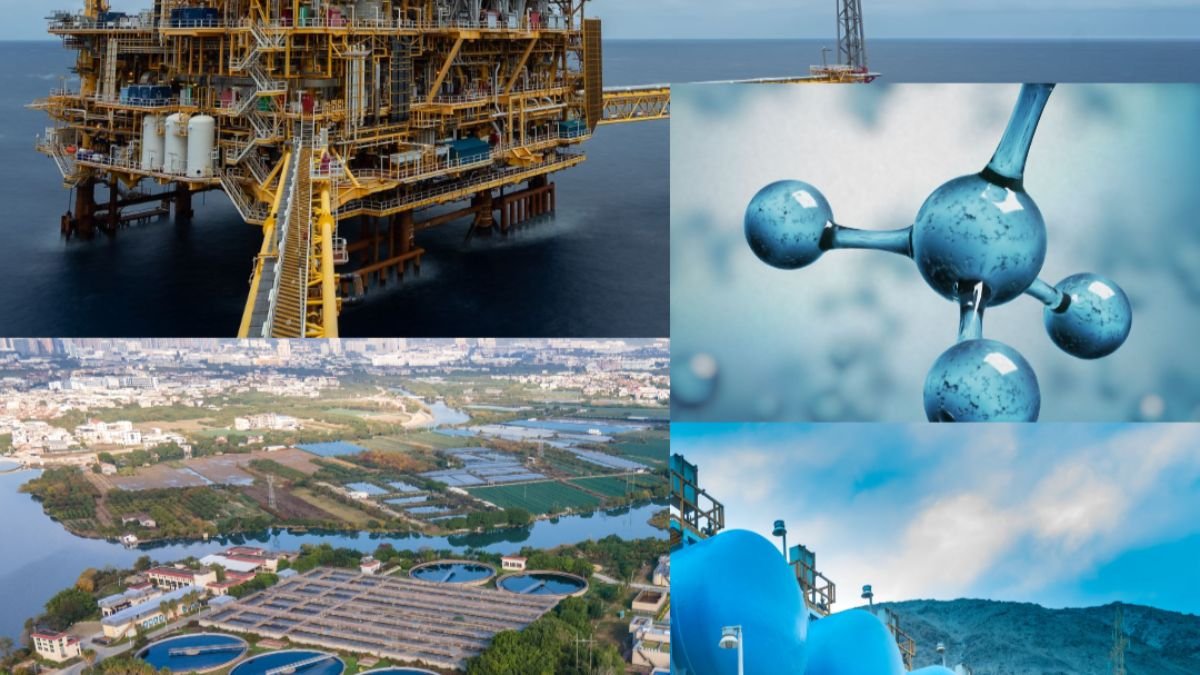Water — it’s the most basic necessity of life, but it has become a scarce resource in many parts of the world. Desalination, the technology to make seawater drinkable, has existed for a long time, but traditional technology has faced challenges such as cost, energy consumption and maintenance.
This is where nanoengineering has emerged as a game-changer, making these membranes not only more effective, but also completely transforming the future of water purification.
Let’s understand how this revolutionary change is happening in 10 key points.
Nanoengineering – a big revolution at the micro level
Nanoengineering means designing and modifying materials at the nanometer level (billionth of a meter). This technology can be used to change the surface, pore size and chemical properties of the membrane so that water molecules pass through easily, but salt and impurities are trapped.
Engineering at this level increases the efficiency of the membrane several times that of conventional technologies, allowing it to clean water faster and better.
Limitations of conventional membranes
Old desalination membranes, such as polyamide-based RO (Reverse Osmosis) membranes, have been in use for decades. But they have several drawbacks—
- High pressure required
- Problems with scaling and fouling
- Degradation of efficiency over time
Nanoengineering addresses these problems directly, leading to reduced maintenance and more sustainable operations.
The magic of nanomaterials
Nanoengineering uses advanced materials such as carbon nanotubes, graphene oxide, and nanoparticles.
- Graphene oxide membranes are extremely thin but have amazing water permeability.
- Silver nanoparticles kill bacteria and microorganisms, increasing the life of the membrane.
- Carbon nanotubes help transport water molecules superfast.
These nanomaterials not only make membranes more efficient, but also reduce their energy consumption.
Major improvement in energy efficiency
Desalination has been an energy-hungry process. Conventional RO plants require high-pressure pumps to pass water through the membrane.
A nanoengineered membrane allows water to pass through at lower pressures because the pore size and surface design make the movement of molecules easier.
The result — lower electricity bills, lower carbon emissions, and more eco-friendly operations.
Anti-fouling design
The biggest enemy of membranes is fouling — the build-up of salt, dirt, algae, and bacteria on it.
Nanoengineering can make the surface hydrophobic (water-repelling) or antibacterial.
This reduces fouling, reduces cleaning costs and makes the membrane last longer.
Higher production capacity
The amount of water that can be filtered in a given time with conventional membranes is limited.
But nanoengineered membranes have a much higher flux rate, meaning they can clean more liters of water per hour.
This means that more people can be provided water from the same plant — and that too in less time.
Cost reduction
When energy consumption decreases, fouling decreases and maintenance needs decrease, there is a direct impact on cost.
Nanoengineered membranes reduce the cost of desalination per liter of water.
As these membranes are mass-produced in the future, their cost will become even more affordable.
Environmental benefits
Using less energy and fewer chemicals in the water purification process means promoting green technology.
Also, the use of nanomaterials increases the lifespan of the membrane, which also reduces waste.
This reduces the negative impact on marine life and the environment.
Solution to global water crisis
According to the United Nations, half of the world’s population could face water shortages by 2050.
Nanoengineering can make desalination so economical and efficient that even coastal cities and drought-prone areas will be able to get a sustainable supply of potable water.
This technology can prove to be a boon especially for countries like the Middle East, Africa and India.
Future directions
Scientists are now working on smart membranes that can detect when cleaning is needed, or which can change the size of their pores according to the quality of water.
The combination of AI and IoT technologies with nanoengineering will make desalination even smarter and sustainable in the future.
Conclusion
Nanoengineering has brought a new revolution in the field of desalination membranes. Where earlier there were major challenges of energy, cost and time in making sea water drinkable, now this technology is solving them to a great extent.
In the future, it will not only become an important weapon to fight the global water crisis, but it is also a big step towards a green and sustainable water supply.
